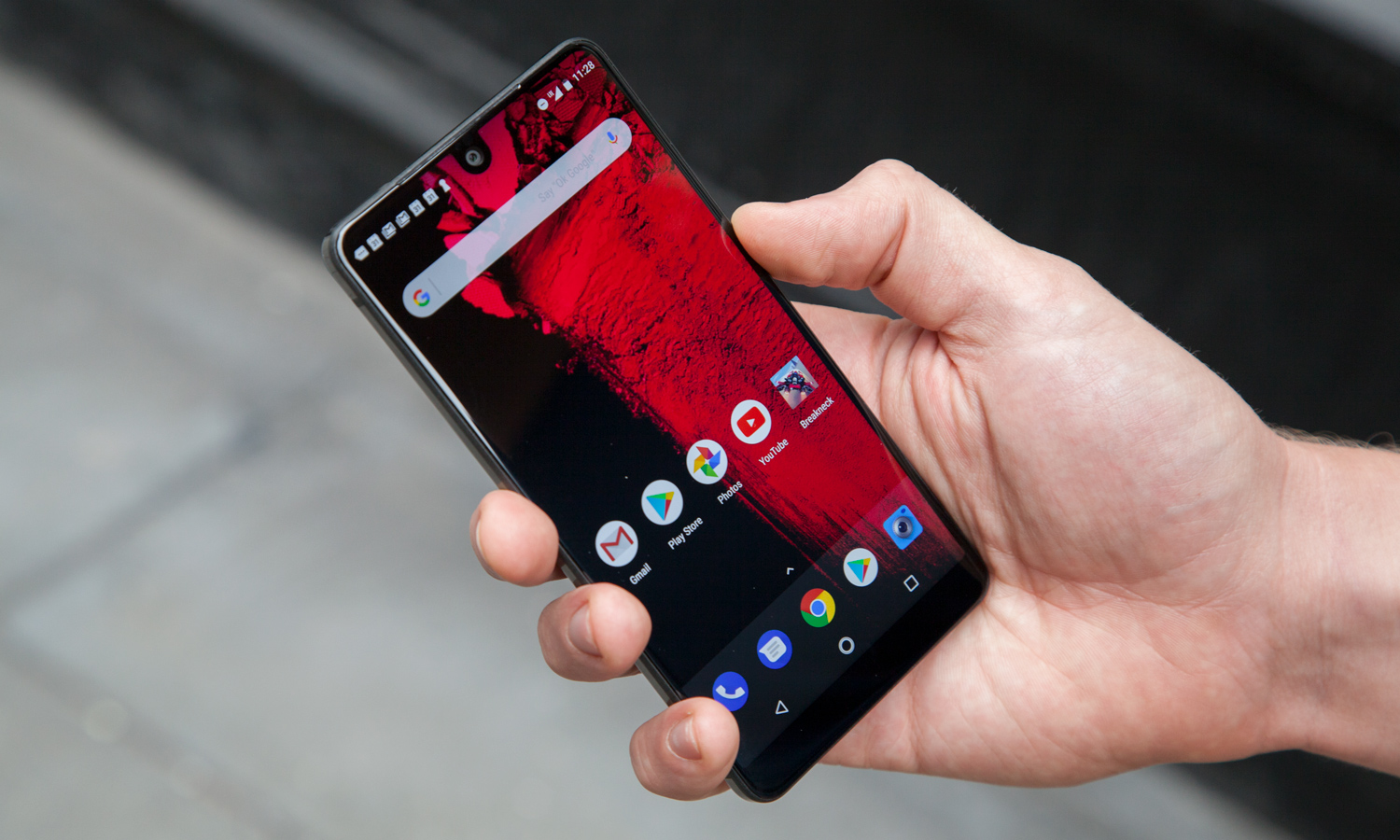Tom's Guide Verdict
The Essential Phone is a gorgeous Android phone with an edge-to-edge screen, clever modular design and refreshingly clean software, but the camera is a real letdown.
Pros
- +
Exquisite titanium-and-ceramic design
- +
Edge-to-edge screen
- +
128GB of storage standard
- +
Innovative modular add-on system
Cons
- -
Slow camera that struggles in low light
- -
No wireless charging or headphone jack
- -
Below-average battery life
Why you can trust Tom's Guide
It takes a lot of guts to go up against Samsung and Apple these days if you're a smartphone startup. And it takes an equal amount of guts to release a phone with a key feature that is as rough as what you'll find on the new Essential Phone.
Essential is no ordinary underdog. Its founder and CEO, Andy Rubin, helped create Android; the company also has several ex-Apple and ex-Google employees among its ranks; and investments already place Essential's value at more than $1 billion. Essential isn't just making a phone, either. It's trying to build an ecosystem that includes a new smart home assistant to go head-to-head against the Amazon Echo and Google Home.
But the Essential Phone (which is now available for $499 after a price cut) is where it all starts. Available through Sprint or unlocked, the handset sports a stunning titanium design with an edge-to-edge display, a clever modular system that has the potential to top what's already out there and a generous 128GB of storage. Unfortunately, the Essential Phone's camera performance simply doesn't measure up, and there are performance bugs that need to be addressed.
Updated March 2:
- After months of only offering the Pure White and Black Moon colorways, Essential has finally released four new limited edition models of its PH-1 smartphone: Ocean Depths, Copper Black, Stellar Gray and Halo Gray. All of these new colors retail for $599, except for Halo Gray, which is an Amazon exclusive and is actually cheaper than the original models at $449. Currently the green-and-gold Ocean Depths variant is out of stock.
Design: A real (tough) beauty
The Essential Phone is simultaneously classic and modern. Its squared-off edges remind us of earlier iPhones, while the edge-to-edge screen looks and feels like the future.
This phone is also tough. It has a superdurable titanium frame that the company claims doesn't scratch, dent or bend. The back is made of ceramic, which is scratch-resistant but very prone to fingerprint smudges. It's worth noting, though, that the Essential Phone doesn't offer any water resistance.
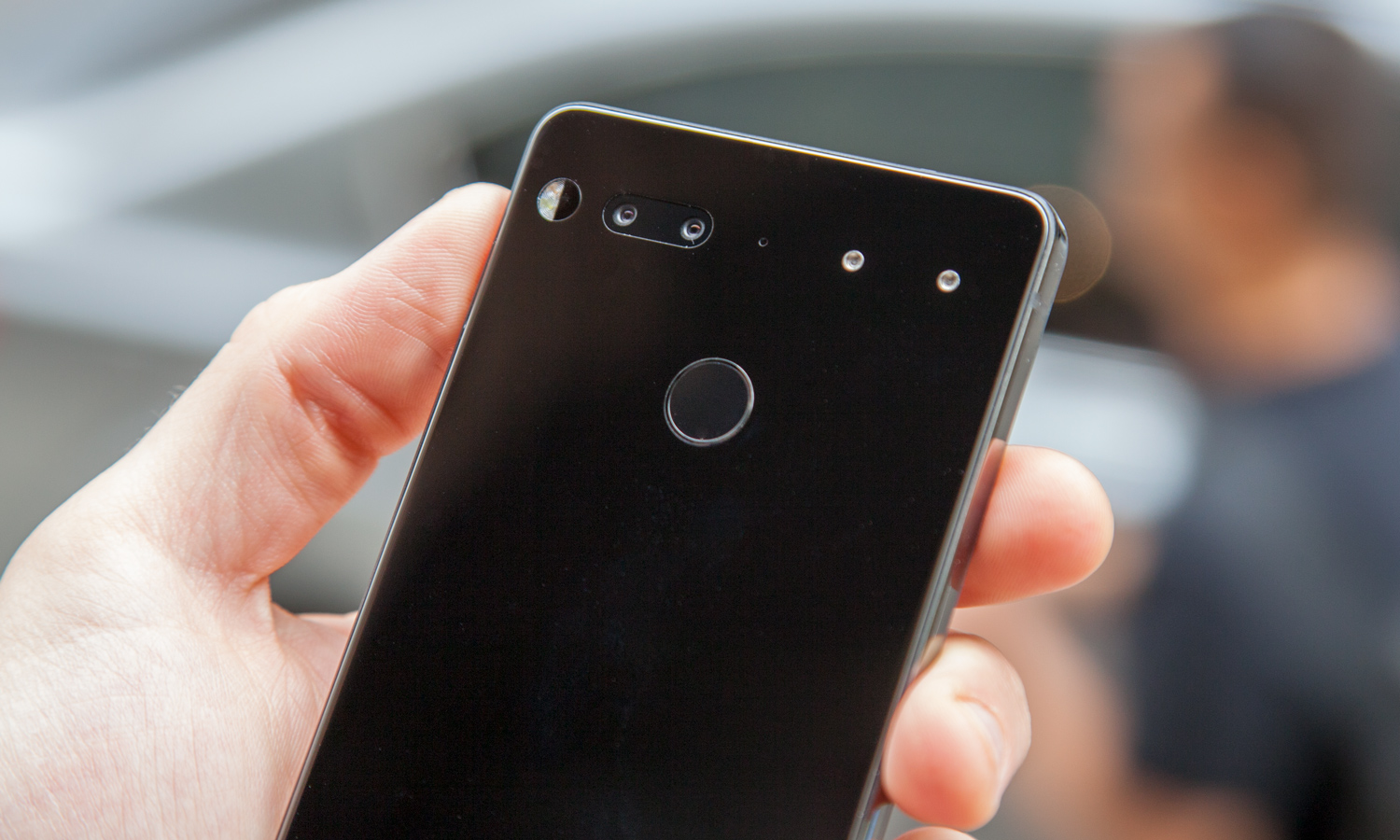
The back of the device also houses the magnetic connectors for the Essential Phone's modular add-ons (more on that later). The bottom has a USB Type-C port, but you won't find a headphone jack, which is a bummer. Some may lament the lack of a microSD card slot, but it's hard to complain when this phone comes with 128GB of storage built in.
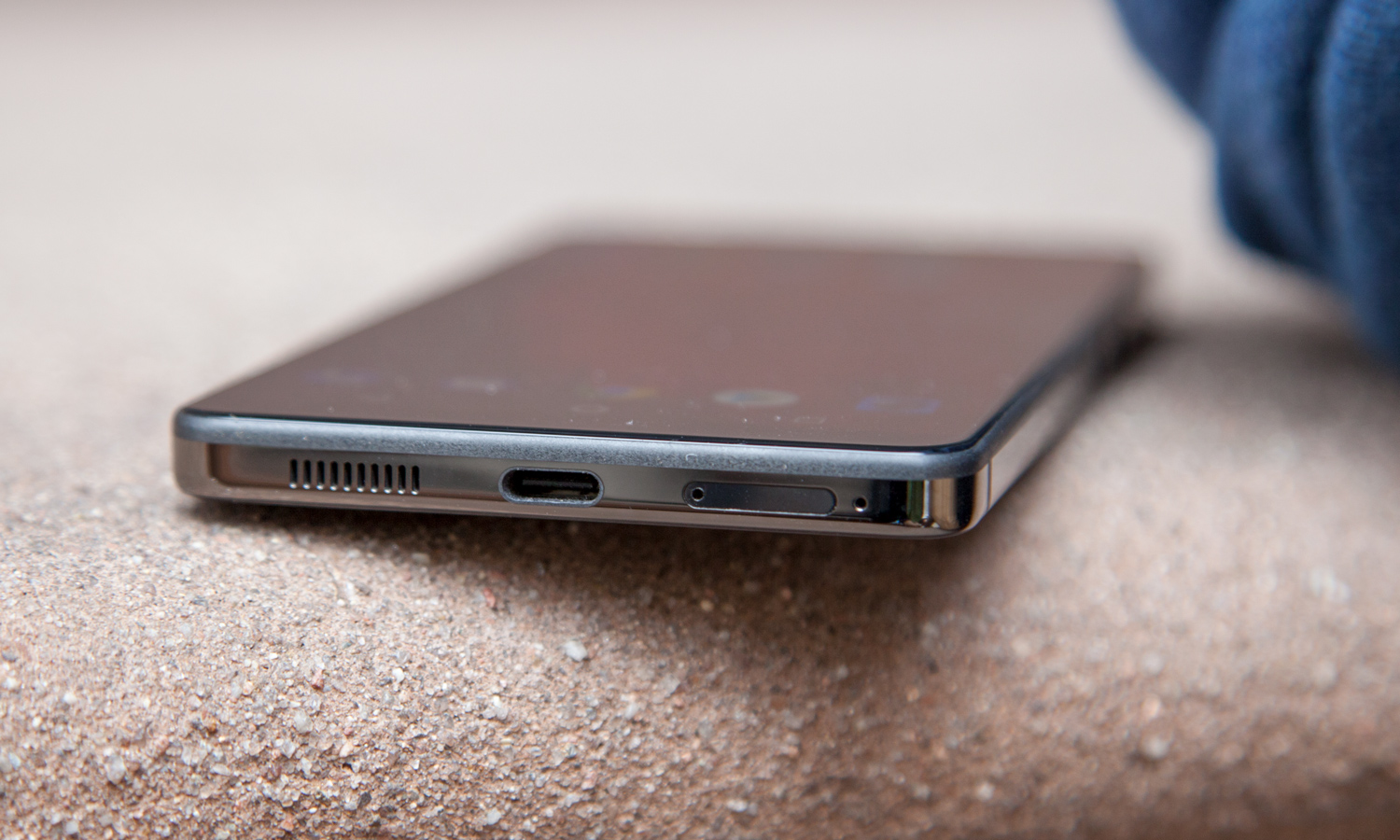
The Essential Phone's titanium-and-ceramic design is simultaneously classic and modern.
Weighing 6.5 ounces, the Essential Phone is quite heavy, given its 5.7-inch screen. For instance, the Samsung Galaxy S8 weighs only 5.5 ounces, and it has a 5.8-inch display, though the display is narrower than the Essential's panel.
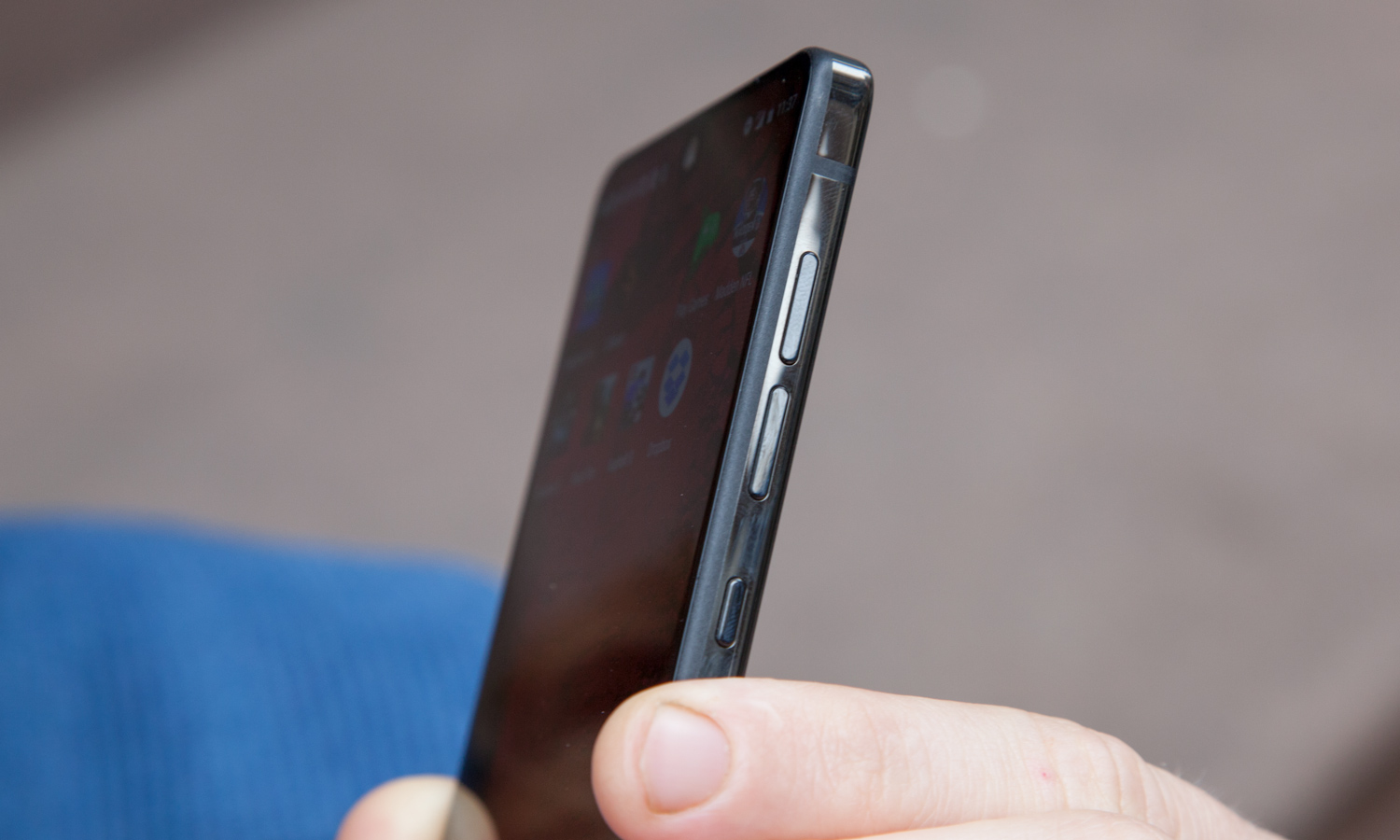
We tested the Black Moon color of the Essential Phone, but it's also available in Pure White; Stellar Gray and Ocean Depths are listed as "available soon."
Essential Phone (PH-1): Key specs
| Price | $499 to $699 |
| OS | Android 7.1.1 |
| Screen | 5.71 inches (2560 x 1312 pixels) |
| CPU | Snapdragon 835 |
| RAM | 4GB |
| Storage | 128GB |
| Rear Camera | 13-MP dual cameras (f/1.85 lens) |
| Front Camera | 8-MP (f/2.2) |
| Battery | 3,040 mAh |
| Size | 5.6 x 2.8 x 0.3 inches |
| Weight | 5.5 ounces |
Edge-to-Edge Display: Gorgeous with one exception
The 5.71-inch screen on the Essential Phone is simply captivating. This quad-HD (2560 x 1321 pixels) display stretches from the left edge to the right edge of the device, and there's a small bezel or chin beneath the screen. There's no physical home button; instead, you use on-screen buttons along the bottom to navigate, and a fingerprint sensor beneath the camera for unlocking the device.
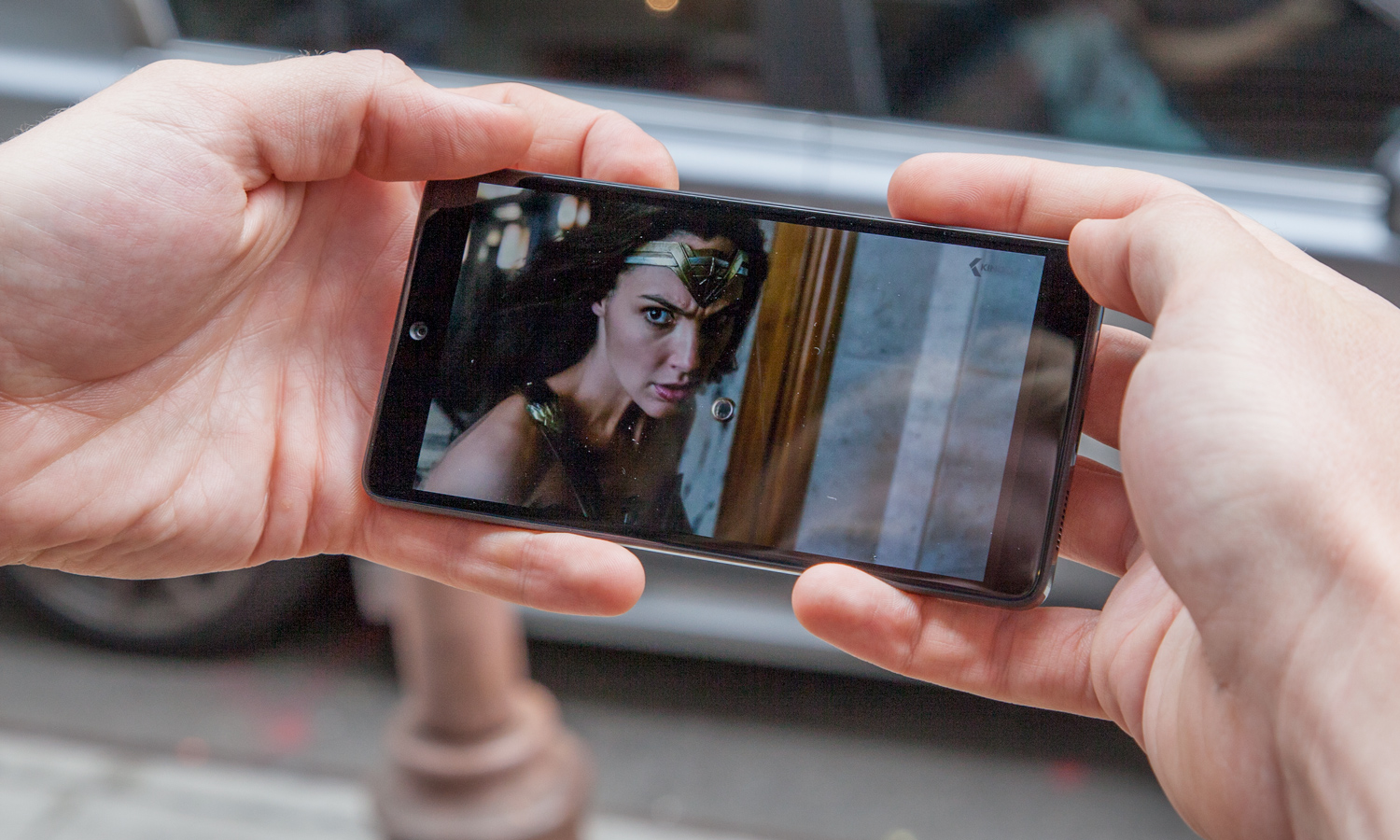
There's only one pockmark on this design, and it's the front camera, which swoops down from the top and interrupts the edge-to-edge flow. It's not much of an eyesore when you're watching content on a darker screen or you're on the home screen, but it is a distraction when you're on a page with a white background, such as the Google Play store or in the Chrome browser.
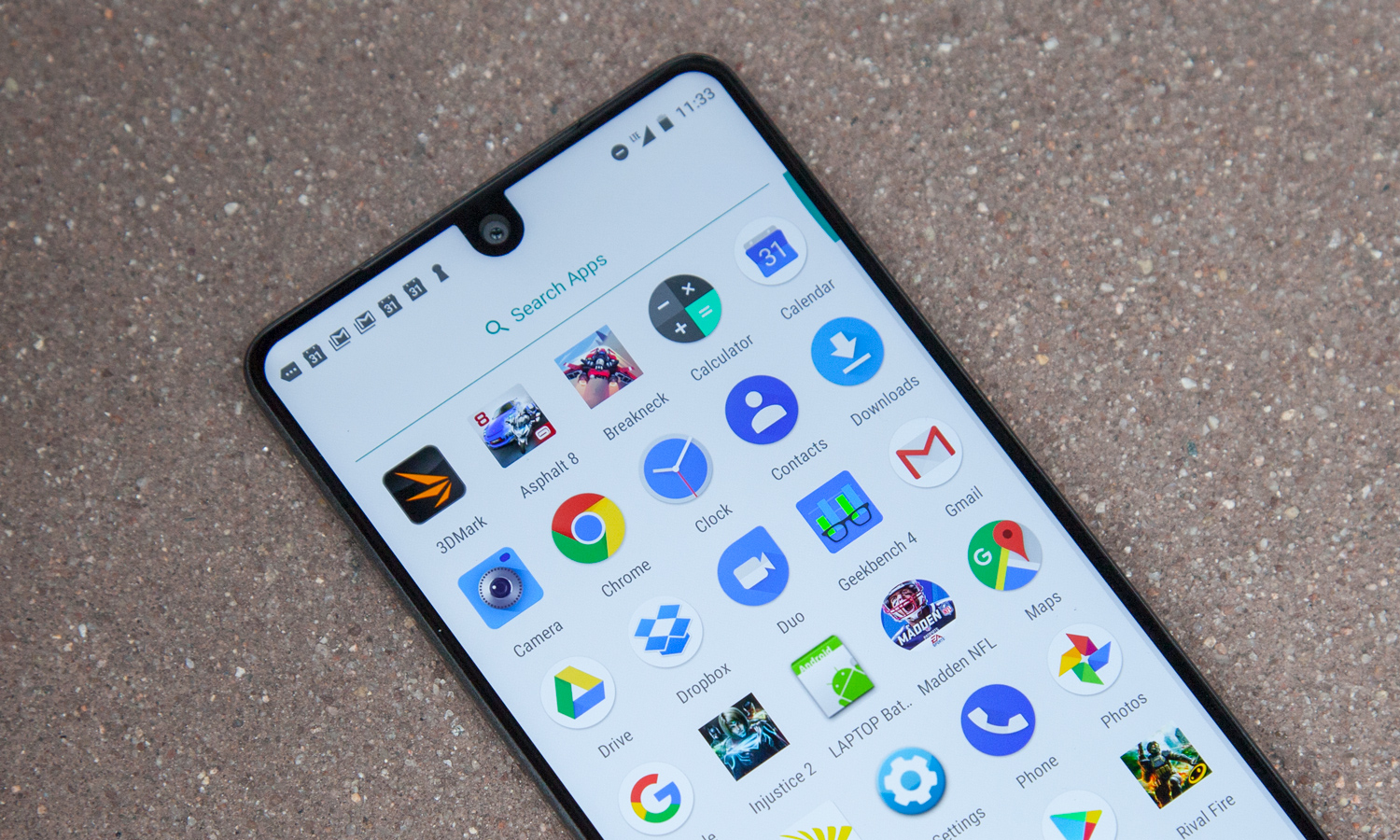
The screen performed well on our benchmark tests, covering an impressive 159 percent of the sRGB color gamut, which is better than the LG G6 but behind the Galaxy S8 and OnePlus 5. I appreciated rich hues as I watched the trailer for Thor: Ragnarok on this screen, including the way Thor's dirty-blonde locks popped against his shiny chrome-and-gray uniform.
MORE: Best Smartphones on the Market Now
The screen delivers fairly accurate colors, too, as it turned in a Delta-E score of 0.28. That's nearly perfect, as 0 is ideal, but that doesn't tell the whole story. Because this is an LCD panel and not OLED, blacks can look gray, and the contrast wasn't as good as it could have been as I watched the final scene from this season's Game of Thrones finale.
Dual Cameras: This is just not right
I know phones can get better over time with firmware and software updates — and Essential has already issued a couple — but this is not a camera Essential should have put in consumers' hands.
The camera was very slow to capture and store images; I noticed a spinning circle way too often in the upper right-hand corner after snapping a shot.
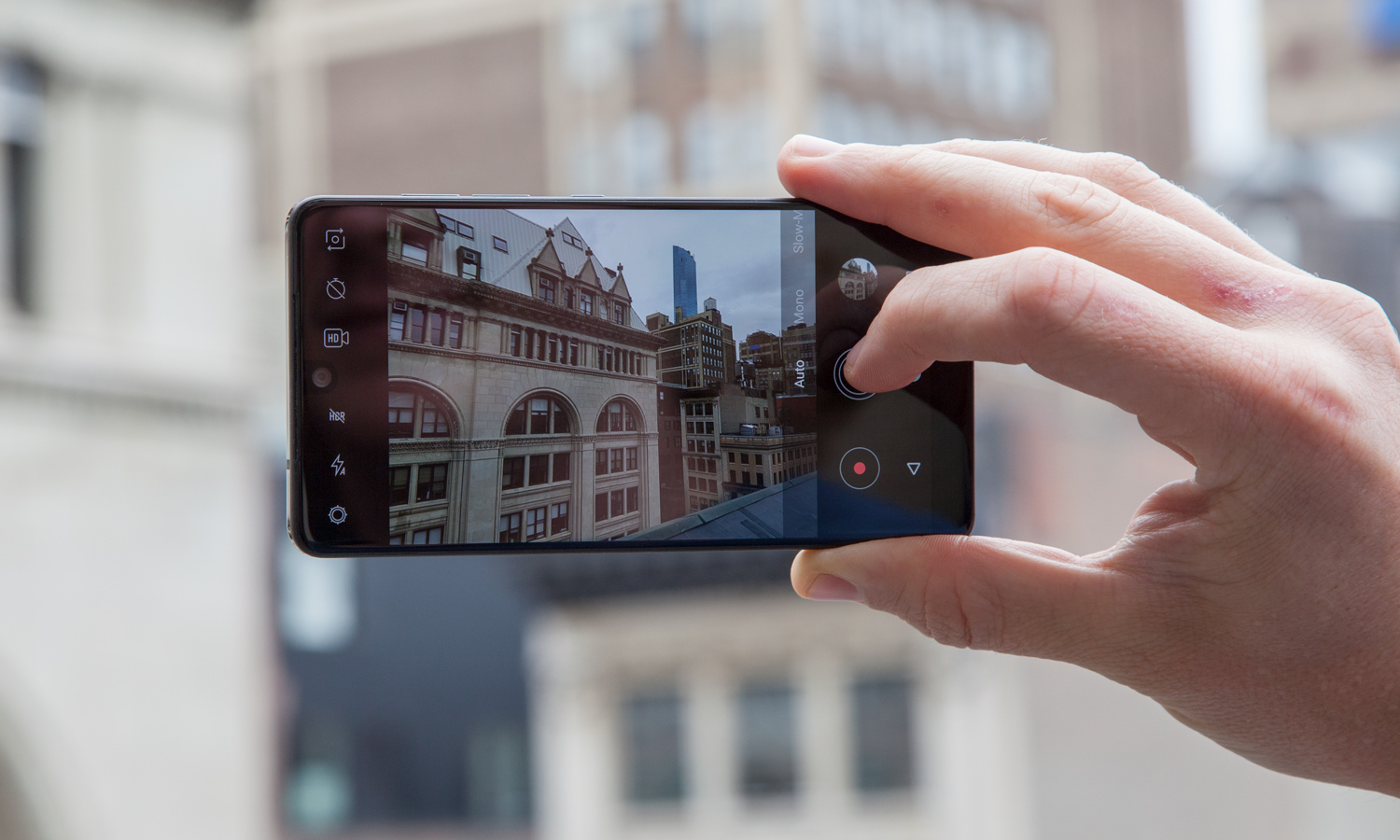
The dual 13-megapixel cameras on the back feature a f/1.85 lens, with one RGB and one monochrome camera. You don't get an optical zoom from these dual shooters, as you do from the Galaxy Note 8 and iPhone 7 Plus. But Essential claims that this setup can capture up to 200 percent more light than traditional phone cameras; you can also shoot black-and-white images.
It's possible that Essential may roll out a portrait-mode-like effect for the dual cameras, according to The Verge, but we'll have to see.
In head-to-head tests with the Galaxy S8 indoors, the Essential Phone struggled, especially in low light. Take this shot of a few figurines and marbles: The Essential image is downright dingy and blurry, compared to the S8's shot. It's also hard to make out the grain on the table in the Essential photo.
Worse, the Essential Phone's camera was very slow to capture and store images; I noticed a spinning circle way too often in the upper right-hand corner after snapping a shot. Sometimes I had to wait 3 seconds before taking another photo.
The Essential Phone camera does fairly well in bright lighting conditions. A photo taken of tomatoes was sharp and colorful on both phones; the S8 has a slight edge in terms of contrast and a bit more vivid reds.
A shot of flowers I took exhibited a good amount of detail in the bright-purple petals. However, the S8's image had brighter green leaves and detail in the shadows.
Annoyingly, while the Essential Phone's camera has an HDR mode, you need to manually enable it every time you open the camera app; it doesn't remember your settings. We hope that gets fixed, pronto.
When cropping into a statue of William H Seward, the S8's camera won out with a more defined face. To be fair, though, both images looked great when zoomed out.
A Smarter Modular Approach
Like the Moto Z line, the Essential Phone is designed to support snap-on accessories, but the implementation is better on this upstart phone.
For instance, Essential's 360 camera ($199 to add on, $99 as part of a bundle with the phone) is a lot more compact than the full-size sleds Motorola sells, which cover the entire back of its phones. Essential's accessory attaches only to the top part of the back of the phone, taking up about a quarter of the space.
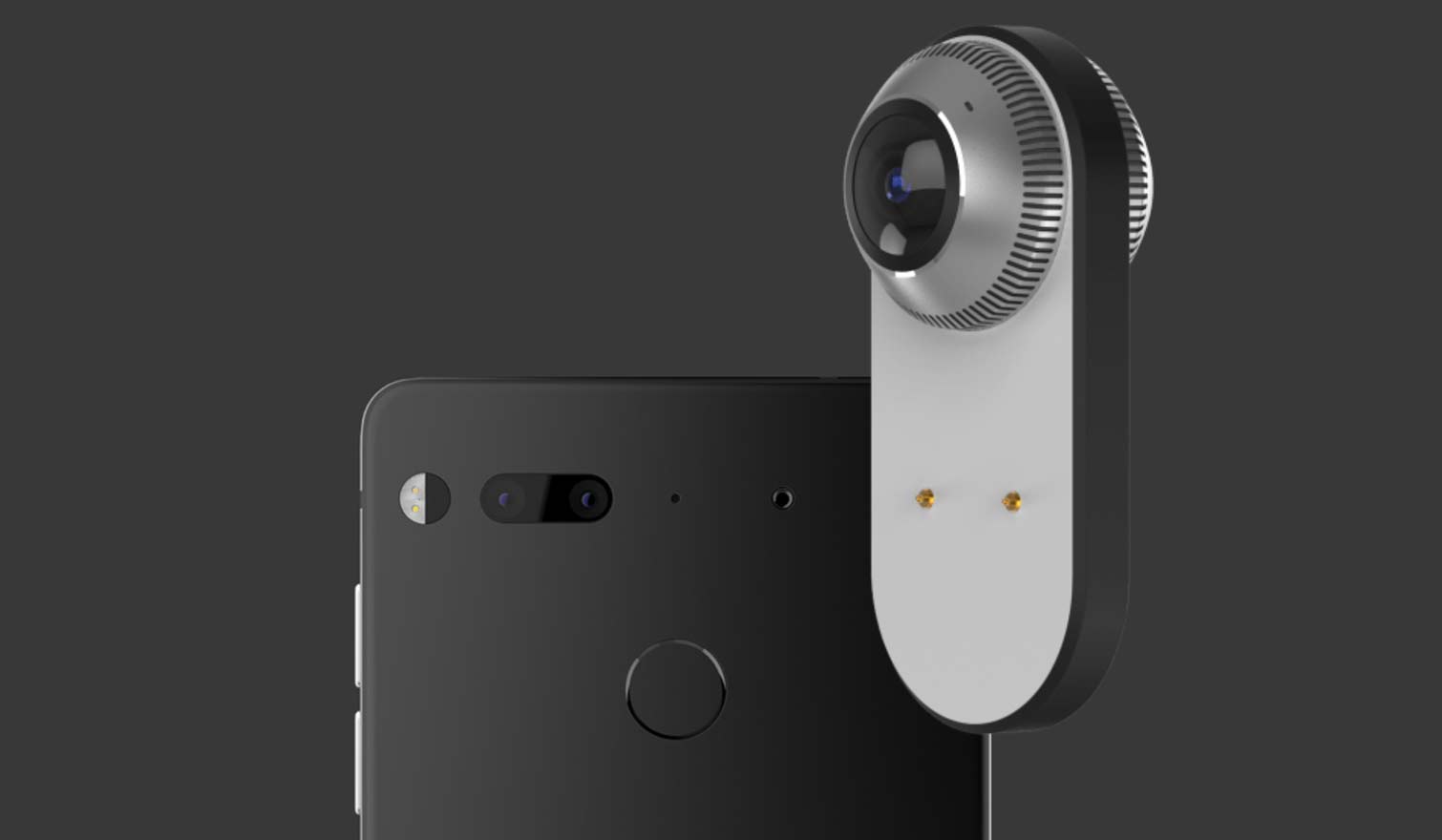
This module is smaller partly because the data transfer happens over a form of wireless USB; the connector is really just for delivering power. The Essential camera even has a mini fan for dissipating heat.
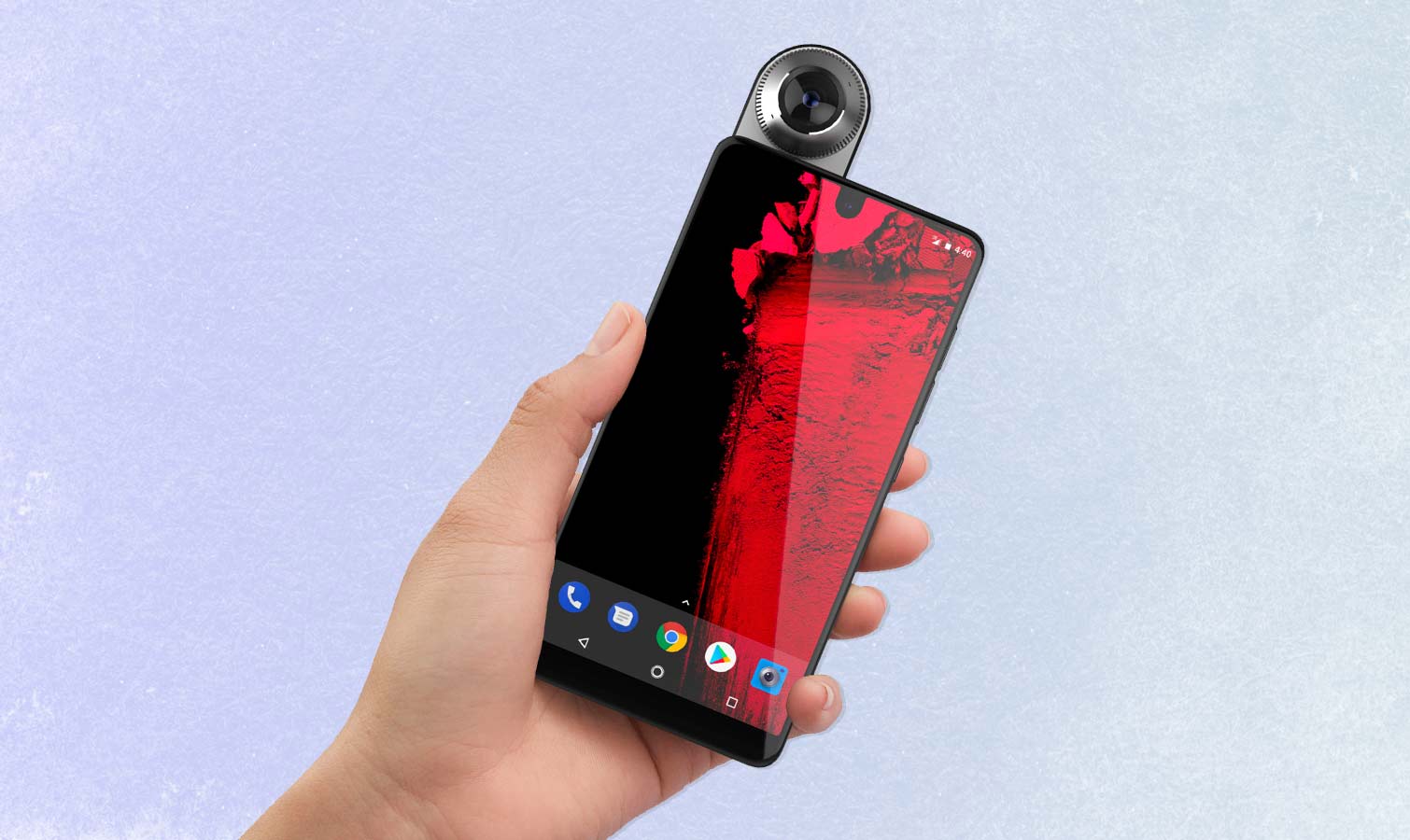
The problem with Essential's modules is that there are so few of them. It only offers the 360 camera, while Motorola has a couple of dozen Moto Mods to choose from, including power packs, a projector, speakers and more. And Essential will likely need to work with developers to grow the number of options, which could be tough to do for a smaller company.
Unlike Motorola's Moto Mods, the compact 360 camera add-on for the Essential Phone takes up about a quarter of the space.
360 Camera: Good for its Size, App Needs Work
So about that camera module... Measuring 2.6 x 1.3 x 0.5 inches, the Essential 360 camera looks like one of those Amazon Dash buttons with two lenses at one end. It’s a lot smaller than the Samsung Gear 360, another $179 camera whose handle alone is larger than the Essential camera.
We like that the Essential 360 camera snaps onto the top of the phone. Most other 360 cameras, such as those from Insta360, attach to a phone’s Lightning or USB port, which means you have to hold your phone upside down in order to use it. As noted above, a small fan in the 360 camera itself whirs to life once connected to the Essential phone. It’s not overly loud, but its high-pitched whine is like hearing a mosquito a foot from your ear.
MORE: Best 360 Cameras
Inside the Essential 360 are two 12-MP lenses, each with an f/1.8 aperture. It takes 360-degree photos at a resolution of 6080 x 3040 pixels, and records video at 3840 x 1920 at 30 fps.
In an outdoor photo taken by Madison Square Park, the Essential camera didn’t record colors as well as the 360 cam competition. An orange trash can looked more faded than the photos from the Samsung Gear 360 and the Insta360 One. It did a better job at exposing the shadowed face of photographer (who had his back to the sun), but it suffered from much more lens flare, and had much less contrast overall.
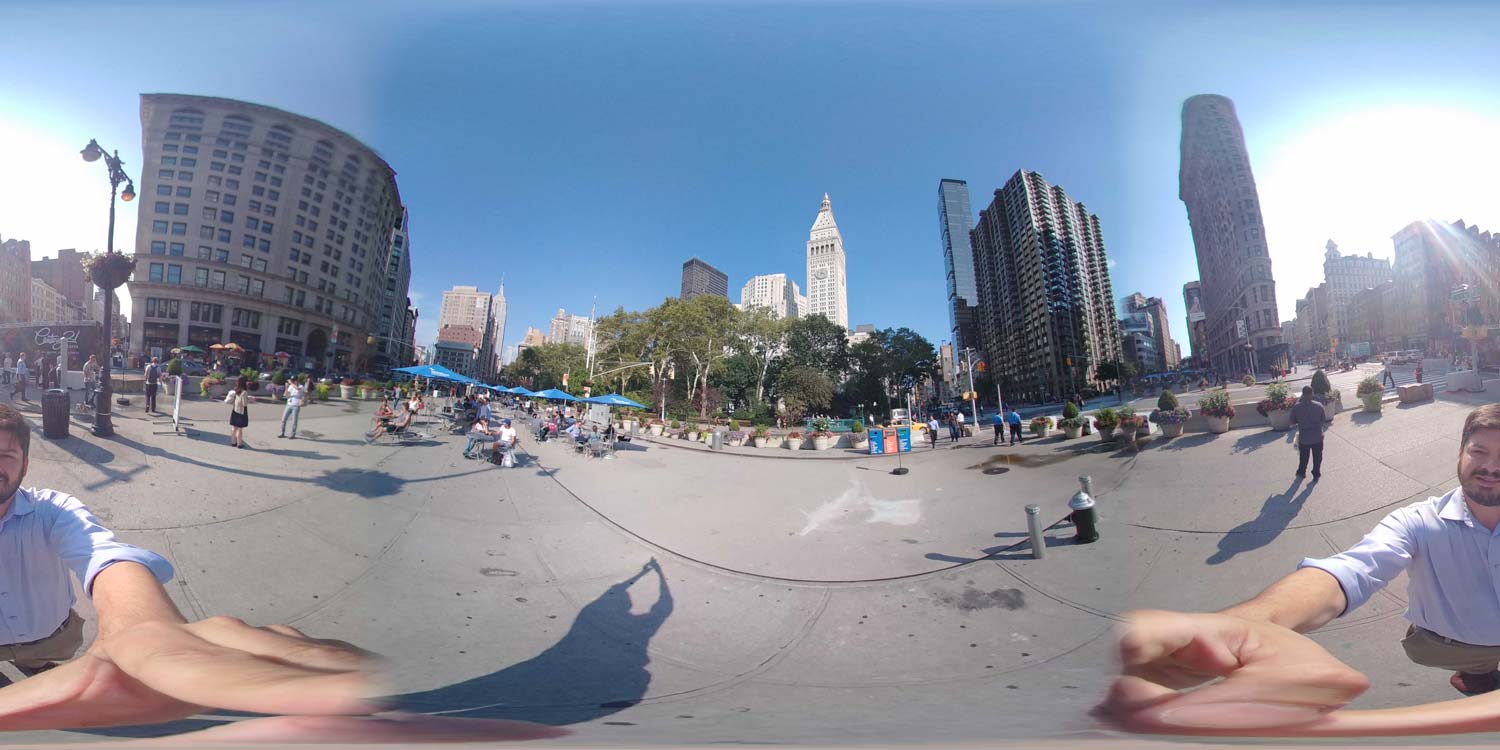
Indoors, the Essential camera was less effective. Black lettering on a white sign was nearly washed out in the Essential’s photo. The Samsung Gear 360 came in second, but the sign was most legible from the Insta360 One’s camera. However, the Essential’s camera did a better job at eliminating lens flare from an overhead light, and the reds, oranges, and greens in stacks of apples was pleasingly colorful, on a par with the other two cameras. It also did a good job exposing for our photographer’s face, though his skin tone was a bit redder than it should have been.
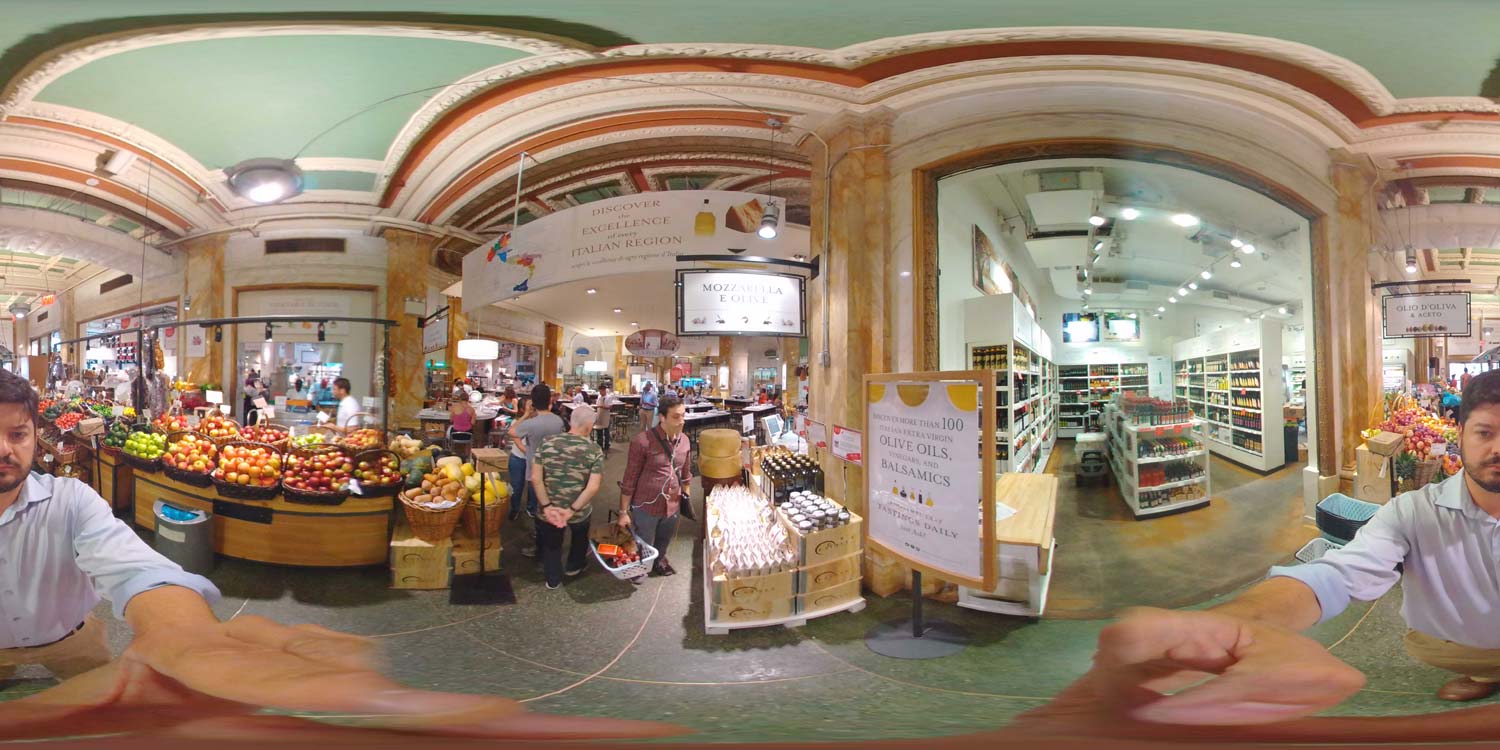
While the Essential 360 camera takes pretty good photos for its size and price, its app needs a lot of work. The camera was slow to launch, sometimes taking as many as 5 seconds. It was occasionally slow to take a photo, too.
Several times, we saw a black screen when we switched back to the camera from the photo gallery, or when going from 4K to 2K resolution. we had to relaunch the app, or reconnect the camera to the phone, in order for it to work again.
After taking a picture with the Essential camera, you can share it to your social network of choice, add a filter, or make basic adjustments to lighting, color, and what the app calls “Pop,” which makes things look more vibrant. If you make edits to a photo, though, it saves it as a flat file, so you can’t view and scroll around it as a 360-photo on the phone.
There’s little in the way of in-camera adjustments. You can switch between 4K and 2K resolution, but that’s it. There’s no self-timer, no way to adjust white balance, nor HDR mode.
Performance: Speedy but buggy
In my time with the Essential phone, its Snapdragon 835 processor and 4GB of RAM delivered fairly swift performance. I raced around the track in the Asphalt 8 game, streamed YouTube trailers and then went back to mowing down enemies in Frontline Commando — all without seeing a lag.
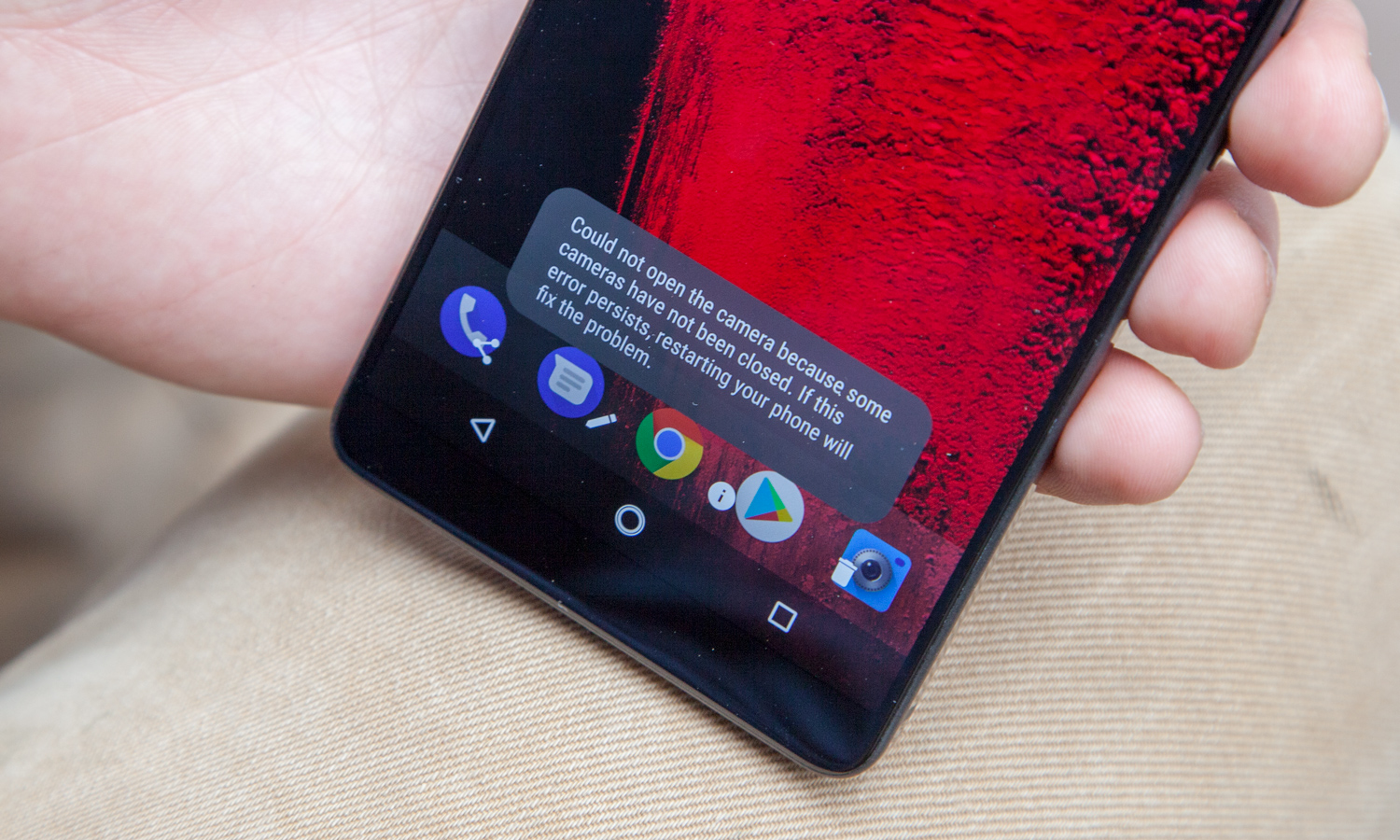
However, I did notice some buggy behavior at times. For example, the Injustice 2 game temporarily got stuck in portrait mode (it's a landscape-based game), though that could have been the app itself. The worst bug was that the camera app crashed, and I couldn't up up the app until I rebooted the phone.
On Geekbench 4, which measures overall performance, the Essential Phone scored 5,960. That's below what the Galaxy S8 turned in (6,295), as well as the OnePlus 5 with 8GB of RAM (6,542). The Moto Z2 Force also notched a higher 6,489 score.
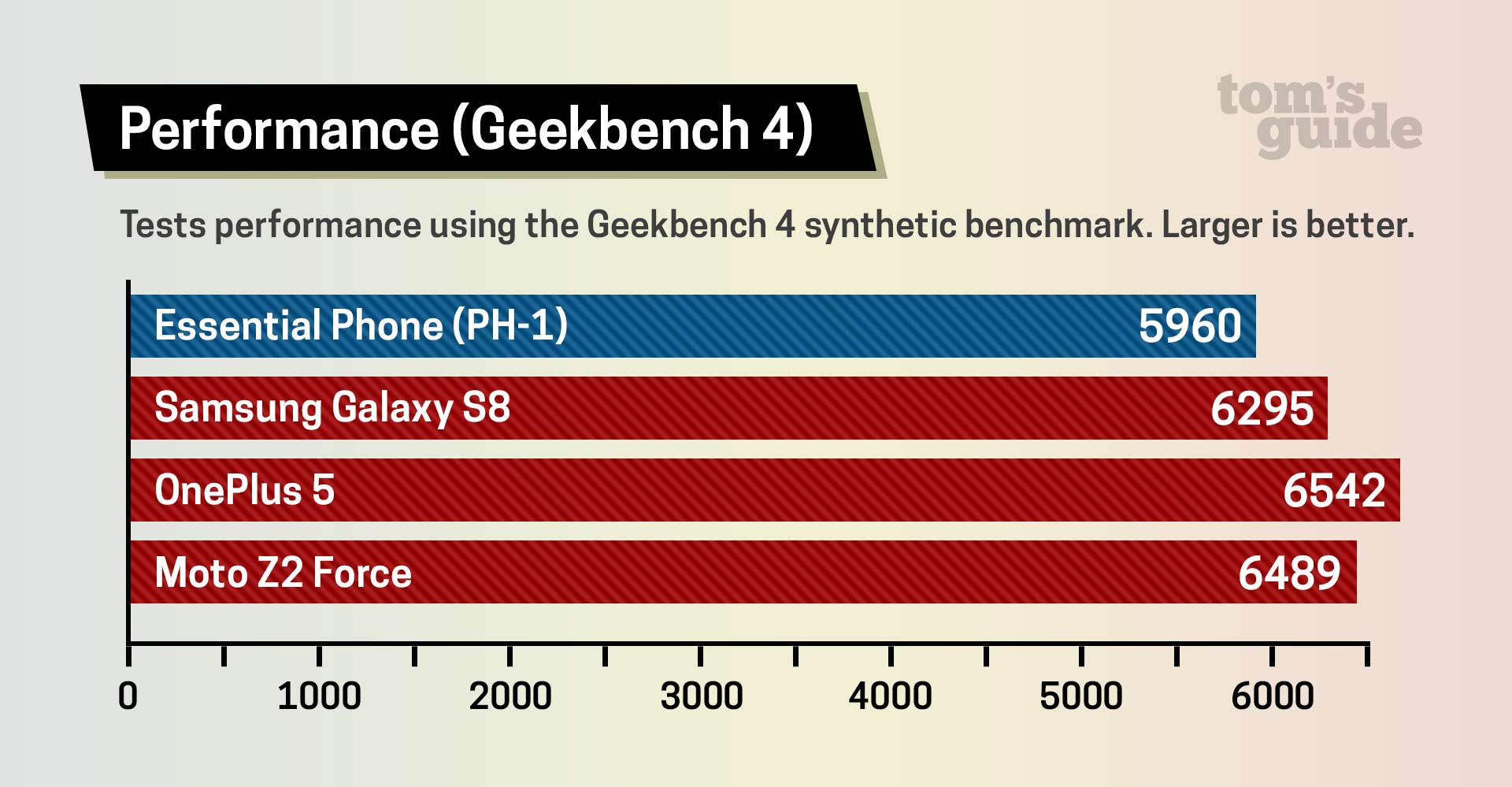
On the plus side, the Essential hit a fairly good 40,748 on the Ice Storm Unlimited graphics test, which beats the S8 (35,903) S8+ (39,576) and Z2 Force (39,807).
Battery Life: Below the competition
With its 3,040-mAh battery, the Essential Phone didn't last as long as we hoped. On the Tom's Guide Battery Test, which involved web surfing over Sprint's 4G LTE network, the Essential lasted 8 hours and 9 minutes.
MORE: Smartphones with the Longest Battery Life
That's well below the category average of 9:40, and also shorter than the Galaxy S8 (10:39) and Moto Z2 Force (10:23). The OnePlus 5 lasted an epic 13:06.
Software: Nice and clean
The best thing about the Essential Phone's software is what you don't see. With the exception of a single My Sprint app, you won't find any carrier bloatware here. In fact, this is the closest thing to pure Android 7.1 this side of a Google Pixel phone.
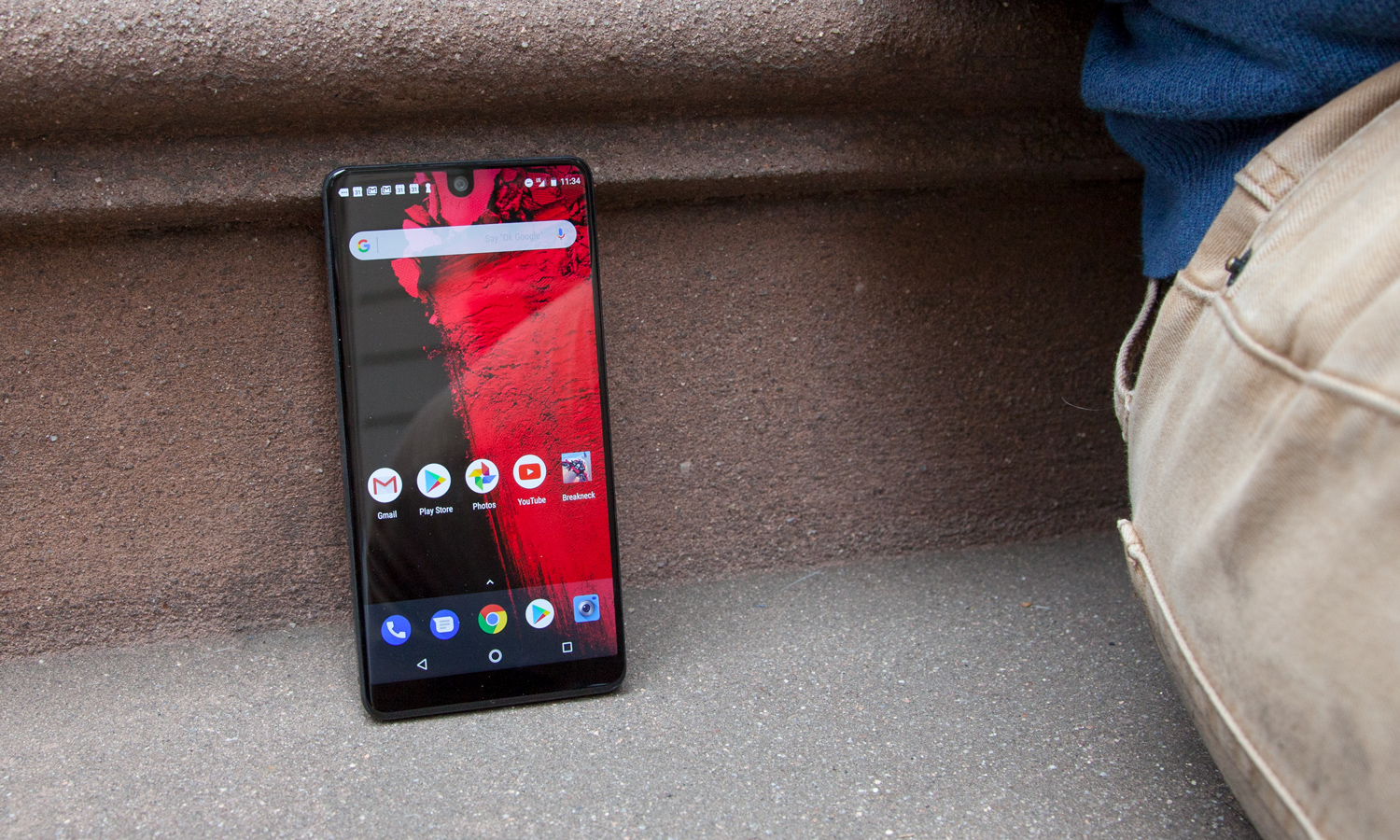
You won't find many special features here, although I do like that you can quickly launch the camera by double tapping the power button. The camera is custom but very stripped down, and there's an app for sending diagnostic data to Essential.
Bottom Line
Between its uniquely compelling design, lack of software clutter, beefy storage and smart add-on system, the Essential Phone is a handset with a lot of potential. But potential doesn't justify spending around $500 for a phone. Execution does.
And, unfortunately, the Essential Phone falls flat on the most important phone feature, which is the camera. The sluggish speed and weak low-light performance make it difficult to recommend this device over the Samsung Galaxy S8, even if you can now get the Essential Phone for $250 less than Samsung's flagship. The performance bugs don't help either. And while the OnePlus 5's camera isn't stellar, that phone offers a better-looking OLED screen, faster performance and much longer battery life for less than $500.
The Essential Phone could indeed get better over time with updates, but limited distribution and a limited selection of add-on modules are working against this startup. Then there's the fact that Google's Pixel 2 is on the way, delivering the new Android Oreo out of the box. Overall, the Essential is gorgeous and innovative, but it's simply not a practical choice — at least not yet.
Credit: Shaun Lucas/Tom's Guide
Mark Spoonauer is the global editor in chief of Tom's Guide and has covered technology for over 20 years. In addition to overseeing the direction of Tom's Guide, Mark specializes in covering all things mobile, having reviewed dozens of smartphones and other gadgets. He has spoken at key industry events and appears regularly on TV to discuss the latest trends, including Cheddar, Fox Business and other outlets. Mark was previously editor in chief of Laptop Mag, and his work has appeared in Wired, Popular Science and Inc. Follow him on Twitter at @mspoonauer.
-
I do think the design is pretty stunning when you look at the edge-to-edge screen and the materials used. Maybe it's something you have to see/touch in person.Reply
-
williamtgeorge Last Monday night (8/28 11:45 pm) I received my shipment notification for my pre-ordered Essential PH-1 phone and 360 degree camera. The confirmation email mentioned that the PH-1 is not compatible with the Verizon Network. Early information from Essential said the phone would work on all GSM, CDMA and LTE carriers. What's going on here? Is Verizon playing hardball because they didn't get an exclusive? Is Verizon upset that they didn't get to put their junk-ware apps and O.S. overlay skin on the Pure Android operating system? I'm wondering if Verizon can explain this problem to the U.S. Public Utilities Commission?Reply -
mstina64 Wish I would have researched this phone,now I'm in for 18 long months of complete dissatisfaction,and misery.Reply -
lucore Got talked into this phone after no real research by a condescending Sprint salesman (I went in for an LG). After one day I just about hated it, but found out exchanging for the LG I wanted had complications, so now I'm stuck with it while attempting to enjoy it with mixed results.Reply
